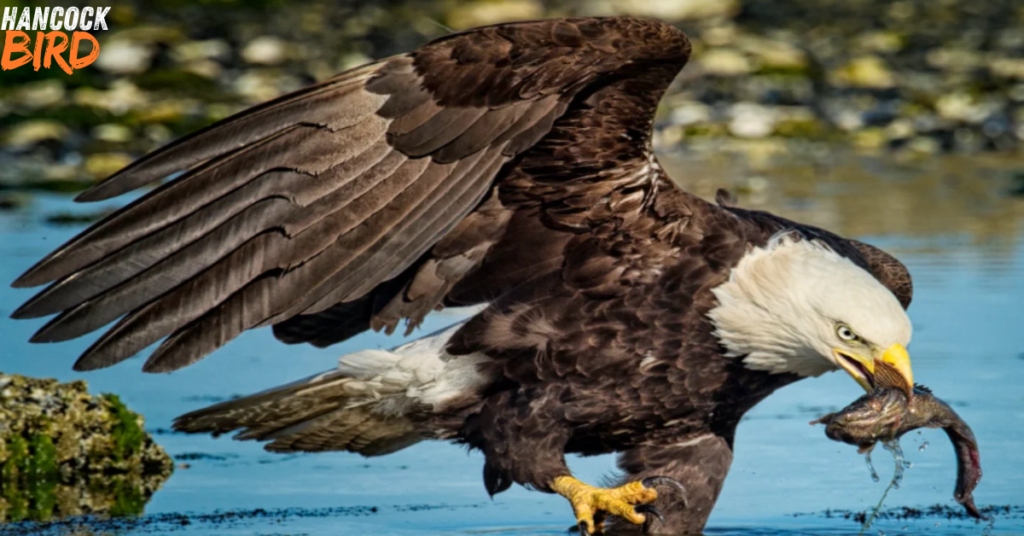Introduction to the Hancock Bird
Imagine wandering through a lush forest, the air filled with the sweet melodies of birdsong. Among these enchanting sounds, one species stands out: the Hancock Bird. With its vibrant plumage and unique calls, it captures the hearts of birdwatchers and nature lovers alike. But this captivating creature faces an uncertain future. As we dive into the world of the Hancock Bird, we’ll explore why protecting this remarkable species is essential—not just for its survival but for maintaining our planet’s biodiversity. Join us on this journey to uncover what makes the Hancock Bird so special and how we can all play a role in its conservation.
The Importance of Protecting Endangered Species
Endangered species are critical to maintaining the balance of our ecosystems. Each organism plays a unique role, contributing to biodiversity and ecological stability. When one species dwindles or disappears, it can create a ripple effect that impacts others.
Protecting these vulnerable animals allows us to preserve not only their existence but also the intricate web of life they support. Healthy populations help pollinate plants, control pests, and maintain food chains.
Moreover, many endangered species hold potential benefits for humanity. They can inspire scientific research leading to medical breakthroughs or innovative technologies derived from nature’s designs.
Cultural significance is another reason why we should care about endangered wildlife. Many communities have deep connections with specific animal species that shape their identities and traditions.
Every effort made toward conservation reinforces our commitment as stewards of the planet. Safeguarding endangered species enriches our world today and ensures its survival for future generations.
Threats Facing the Hancock Bird Population
The Hancock Bird faces a myriad of threats that jeopardize its survival. Habitat loss is one of the most significant, driven by urban development and deforestation. As their natural environments shrink, these birds struggle to find suitable nesting sites and food sources.
Climate change also poses a serious risk. Altered weather patterns can disrupt migration routes and breeding cycles. Extreme temperatures may render habitats inhospitable, pushing populations further into decline.
Additionally, pollution plays a role in their diminishing numbers. Contaminants in water bodies affect the insects they rely on for sustenance.
Human activity often leads to increased predation as well. Domestic pets roam freely in areas where these birds nest, posing another layer of danger.
All these factors combined create an alarming situation for the Hancock Bird population, making conservation efforts more urgent than ever.
Conservation Efforts and Success Stories
Conservation efforts for the Hancock Bird have gained momentum in recent years. Organizations dedicated to wildlife preservation are stepping up their initiatives. They focus on habitat restoration and protection, which is crucial for this vulnerable species.
One remarkable success story involves a local community’s involvement. By engaging residents in conservation activities, awareness has grown about the Hancock Bird’s plight. These grassroots movements have led to significant improvements in nesting sites.
Moreover, collaborations between scientists and environmentalists have yielded important research findings. Tracking populations through advanced technology has provided insights into their behavior and migration patterns.
Funding from various grants has also played a pivotal role. This financial support enables ongoing monitoring and educational programs that promote sustainable practices among communities near vital habitats.
As we reflect on these achievements, it becomes clear that collective action can lead to meaningful change for the Hancock Bird and its ecosystem.
How Everyone Can Help Save the Hancock Bird
Helping to save the Hancock Bird can start in your own backyard. Plant native trees and shrubs that provide food and shelter for birds.
Educate yourself and others about this remarkable species. Share information on social media or through community workshops. Awareness is a vital step toward conservation.
Support local organizations working to protect habitats. Donations, volunteering, or participating in events can make a significant impact.
If you’re an avid birdwatcher, choose ethical practices when observing these creatures in their natural environment. Keep your distance, avoid disturbing nests, and use binoculars for a better view.
Every small action counts towards creating a safer world for the Hancock Bird. Individuals coming together can drive meaningful change that benefits ecosystems as well as future generations of bird lovers.
Encouraging Responsible Tourism for Bird Watching
Bird watching can be a magical experience, especially when it comes to spotting the elusive Hancock Bird. However, with great beauty comes great responsibility.
Travelers should prioritize ethical practices while exploring bird habitats. Keeping a respectful distance is crucial. This means not disturbing nests or approaching birds too closely during sensitive seasons.
Using binoculars instead of zoom lenses helps minimize your impact on their natural behavior. Remember, patience is key in this pursuit.
Participating in guided tours led by local experts also benefits conservation efforts. These guides often share valuable knowledge about the ecosystem and promote sustainable practices.
Choosing eco-friendly accommodations supports responsible tourism as well. Look for places that practice wildlife conservation and minimize their environmental footprint.
By making conscious choices while enjoying bird watching, we can protect species like the Hancock Bird for generations to come.
Conclusion: Preserving a Piece of Nature for Future Generations
The Hancock Bird is more than just a colorful feathered creature; it symbolizes the delicate balance of our ecosystem. Protecting this species means safeguarding biodiversity and ensuring that future generations can experience its beauty. Every small effort counts, whether it’s spreading awareness or participating in local conservation initiatives.
As stewards of the planet, we have a responsibility to protect all forms of life. The Hancock Bird plays a vital role in its habitat, contributing to pollination and seed dispersal. Losing such species would disrupt these natural processes and negatively impact other wildlife.
By engaging with responsible tourism practices, we can enjoy bird watching while minimizing harm to their habitats. Educating ourselves about sustainable practices enhances our experiences and fosters respect for nature.
The journey toward preserving the Hancock Bird requires collective action from individuals, communities, and organizations. By coming together, we can create a lasting legacy—a thriving environment where both people and wildlife coexist harmoniously.
Every voice matters in this endeavor. Let’s commit ourselves to protecting not just the Hancock Bird but also preserving pieces of nature for those who come after us.







